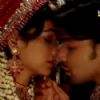But in his original form, Shiva is the param braham ' the supreme creator and he himself is the triad. The supreme Shiva is Rudra (or hollow) and is formless. This supreme Shiva is represented by the Shiva Lingam and is pronounced by the universal word ? (Aum). The Shiva Lingam is full of mysteries and tales and myths, some of which are even baseless. Nevertheless, this is one of the most popular form in which the Lord is worshipped.
Shiva Lingam ' Meaning and the myths
The Sanskrit word 'Lingam' means symbol. Thus the literal meaning of Shiva Lingam is the symbol of Shiva. The Supreme Shiva doesn't have a form and every form is his form. The Shiva Lingam represents him, the Supreme Shiva who is formless. The way when we see a smoke, we infer the presence of fire, the moment we see Shiva Lingam we immediately visualize the existence of the Supreme Shiva.
It has been a common myth that Shiva Lingam represents male genital organs. This is not only misleading but also base less. Such misinterpretations are done in later Vedic period and popularized much later, when Indian literatures actually came into hands of foreign scholars. It was difficult to interpret the language and a word may have different meaning depending on the context. Some of the easy interpretation may be misleading. And such misinterpretation may actually be welcome, if you want to find the defects in somebody else's faith. This misunderstanding is can be one of the most glaring examples of such a situation. Misinterpretations of actual Sanskrit literature led to this false belief. Shiva Lingam is a differentiating mark; it is certainly not a sex mark.
The Lingam Purana states:
???-????-??????? ????-???????????????? ?
meaning:
the foremost Lingam which is devoid of colour, taste, hearing, touch etc is spoken of as Prakriti or nature.
The nature itself is a Lingam (or symbol) of Shiva. When we see nature, we infer the presence of its creator ' Shiva. Shiva Lingam is the mark of Shiva the creator, Shiva the sustainer and Shiva the destructor. It also dispels another myth in which Shiva is considered only as a destructor.
Another authentic reference comes from Skanda Purana where lingam is clearly indicated as the supreme Shiva from where the whole universe is created and where it finally submerge.
????? ????????????: ?????? ???? ???????
???: ???? ??????? ????????????????? ?
(?????? ?????)
Now this should clarify the settle the doubts once and forever.
Forms of Shiva Lingam
Shiva Lingam is worshiped in two common forms ' Chala (Moveable) Lingam and Achala (Non-Moveable or Fixed) Lingam.
Chala Lingam (Moveable Lingam)
The Chala Lingams may be kept in the shrine of one's own home for worship or prepared temporarily with materials like sand, clay, dough or rice for worship and dispensed with after the worship. Another form of the Chala Lingams can also be worn on the body as a pendent in the necklace etc. Chala Lingams are often made of quartz, mercury or metals.
Achala Lingam (Fixed Lingam)
Achala Lingams (or fixed Lingams) are installed in temples and are un-moveable once they are installed. There are rigid rules for achala Lingams which must be followed. Achala Lingams must be offered prayers at fixed times and without failed and greater sanctity is maintained. Usually Lingams are made of black stones.
The Appearance and significance of Shiva Lingam
A Shiva Lingam is generally made up of black or white stones, marbles or metals or Quartz. A Shiva Lingam has three distinct parts which are considered as portions of Brahma, Vishnu and Shiva. The Lower part represents Brahma, the middle Vishnu and the upper and the most prominent represents Shiva. Thus Shiva Lingam represents all the three powers in one- as the Param Braham or Supreme Shiva.
Another interpretation considers Shiva Lingam to be divided in two parts ' Shiva and Shakti. Thus Shiva Lingam are symbols to represent the aspects of the Supreme Shiva. From one view Shiva is Shiva and Shakti; from another view point Shiva is Brahma, Vishnu and Mahesh (Shiva himself).
Shiva Lingams made up of quartz have special significance. Such Lingams have no colour of its own but it takes the colour of any object that comes in its contact. The ling as such represents the attribute-less and formless supreme Shiva.
There is mysterious and indescribable power in Shiva Lingam to induce the concentration of mind. It is like the crystal glazing, mind easily attains one- pointedness by looking at the Shiva Lingam. This is the reason why ancient scholars and sages advocated the worship of Shiva Lingam and its installations in temples.
Listen to the message of Shiva Lingam and it will say:
"I am one without a second".
Important Shiva Lingam across India
Shiva Lingam worship is one of the most popular forms of worship offered by Hindus. Every town, cities, villages, blocks will have at least on temple with Shiva Lingam. However, of all the Shiva Lingams, few carry special importance with them and have been referred in Vedas and Puranas. The important of them are:
- Jyotir Lingams: There are 12 Jyotir located in various parts of India. They are well documented in Puranas. They are:
| Somenath (Somnath, Gujarat) | Mallika-Arjun (Shrishailam, AP) | Kashi-Vishwanath (Varanashi, UP) |
| Aumkareshwar (Aumkareshwar, MP) | Mahakaleshwar (Ujjain, MP) | Trayambakeshwar (Near Nashik, Maharashtra) |
| Kedarnath (Himalaya) | Vaidyanath (Deogarh, Jharkhand) | Rameshwar (Tamil Nadu) |
| Ghrineshwar | Nageshwar | Bhimshankar |
- Panchbhut Lingams: The whole world consists of 5 basic elements ' air, water, fire, earth and sky. The Panchbhut Lingam of Shiva represents these five elements. These Lingams are:
| 1. Kalahastisvar | 2. Jambukesvar | 3.Arujachalesvar |
| 4. Ekambaresvar | 5. Natraja |



















comment:
p_commentcount